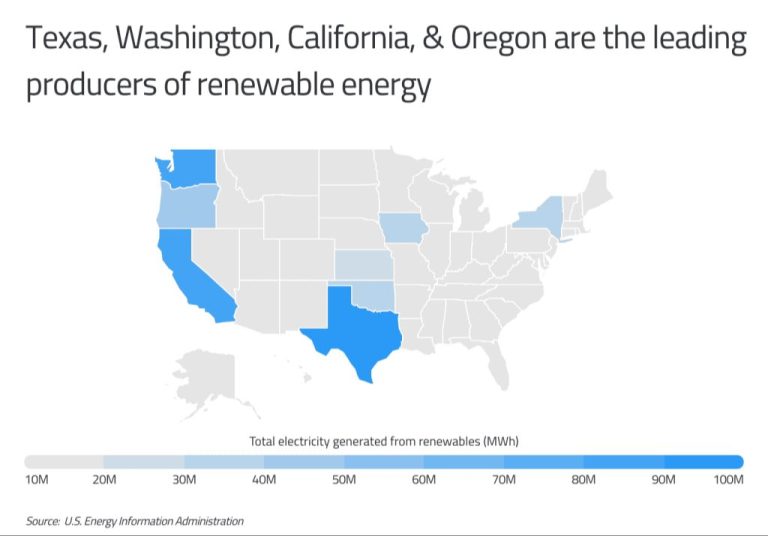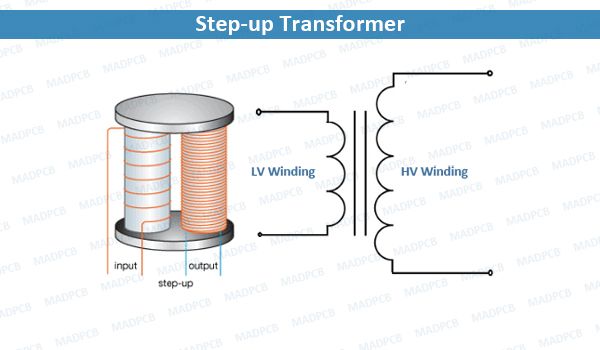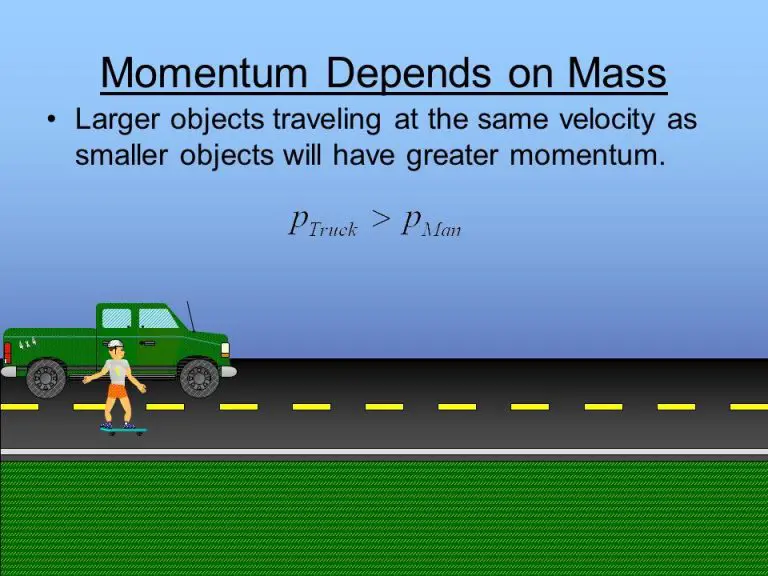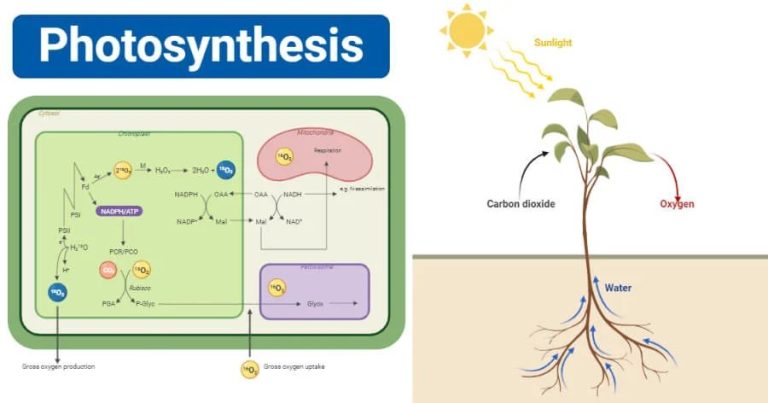What Is The Basic Understanding Of Solar System?
The solar system is the sun and everything that orbits around it. This includes the eight planets and their moons, dwarf planets, asteroids, comets, and other small objects like dust and rocks. The sun sits at the center of our solar system and the planets orbit around it in elliptical paths. It formed around 4.6 billion years ago from a giant cloud of gas and dust.
The main components of the solar system include:
- The Sun – A star at the center of our solar system. It contains 99.8% of the solar system’s mass.
- Planets – There are eight major planets orbiting the sun. From closest to farthest they are: Mercury, Venus, Earth, Mars, Jupiter, Saturn, Uranus, and Neptune.
- Dwarf Planets – Smaller planetary bodies that orbit the sun but have not cleared their orbit. The most well known is Pluto.
- Moons – Natural satellites that orbit planets and dwarf planets. Larger planets can have dozens of moons.
- Asteroids – Rocky objects that orbit the sun but are too small to be considered planets. The asteroid belt lies between Mars and Jupiter.
- Comets – Icy objects often on long elliptical orbits around the sun that develop a coma and tails when close to the sun.
Together, these objects revolve around the sun in our corner of the Milky Way galaxy. Learning about the components of our solar system provides clues into how it formed and its overall structure.
The Sun
The Sun is the star at the center of our solar system and is responsible for the Earth’s climate and weather. The Sun is a yellow dwarf star and makes up 99.8% of the solar system’s mass. With a diameter of 1.4 million kilometers, the Sun is 109 times wider than Earth and 333,000 times as massive. The Sun is about 4.6 billion years old. The composition of the Sun is 74% hydrogen, 25% helium, and 1% other elements like oxygen, carbon, iron, and neon. The surface temperature of the Sun is about 5,500°C, while the core reaches extreme temperatures of 15 million °C. This intense heat is produced by nuclear fusion reactions, where hydrogen nuclei combine to form helium nuclei. The energy released from these reactions generates photons that make their way towards the surface and is emitted as heat and light. The Sun rotates faster at its equator than at its poles. The average rotational period is 25 days at the equator and over 35 days at the poles. The Sun’s magnetic field gets wound up by this rotation and surface magnetic activity like sunspots accompanies its 11-year cycle. The Sun releases a stream of charged particles known as the solar wind, which blows throughout the solar system at about 1 million mph. The Sun’s gravity holds the solar system together, keeping everything in their orbits.
The Planets
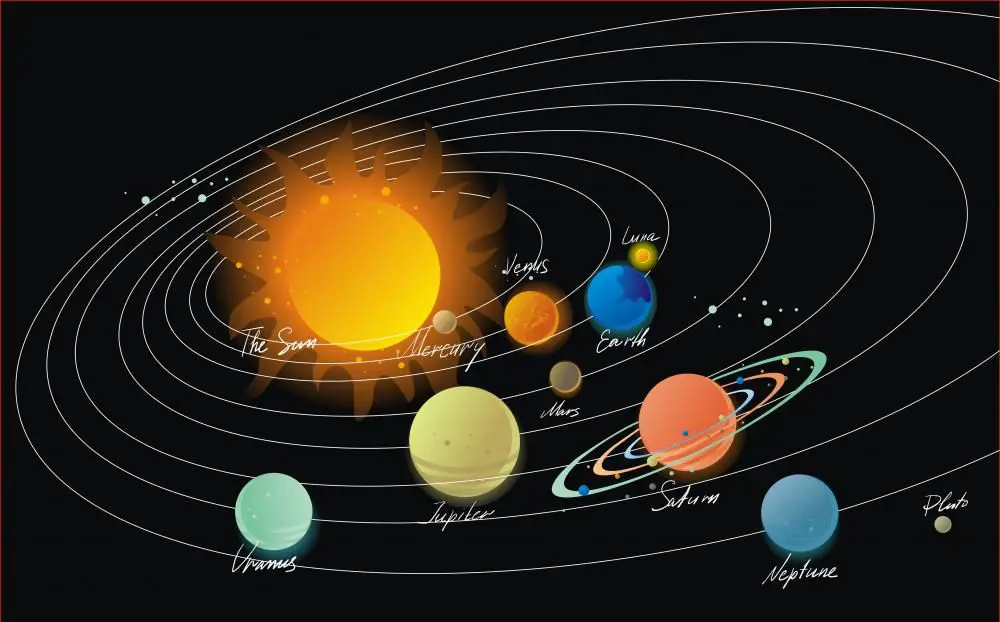
The planets in our solar system can be categorized into two main groups – the inner and outer planets. The four inner planets are Mercury, Venus, Earth and Mars. These planets are smaller and rocky, often called the terrestrial planets. The four outer planets are Jupiter, Saturn, Uranus and Neptune. These gas giants are much larger and composed mainly of gases like hydrogen and helium.
Mercury is the smallest planet, with a rocky, cratered surface. Venus is similar in size to Earth, with a thick atmosphere of carbon dioxide. Earth is our home planet, with large oceans and a breathable atmosphere. Mars is known as the red planet for its rusty soil and has some of the largest volcanoes in the solar system.
Jupiter is the largest planet, famous for its Great Red Spot and many moons. Saturn is known for its beautiful rings and also has dozens of moons. Uranus rotates on its side and has a pale blue-green color. Neptune is the farthest official planet from the Sun and has the fastest winds in the solar system.
Dwarf Planets
Dwarf planets are objects in our solar system that are in direct orbit around the Sun and large enough to be round due to their own gravity, but have not cleared the neighbourhood around their orbits of small bodies. They differ from planets because they don’t meet the criterion of gravitational dominance around their orbit. The most well-known and first recognized dwarf planet is Pluto.
Some key examples of dwarf planets in our solar system include:
- Pluto – The largest and first discovered dwarf planet, located in the Kuiper Belt beyond Neptune’s orbit.
- Eris – Larger than Pluto, located beyond Pluto in the Scattered Disc region.
- Ceres – The only dwarf planet in the inner solar system, located in the asteroid belt between Mars and Jupiter.
- Makemake – A dwarf planet in the Kuiper Belt two-thirds the size of Pluto.
- Haumea – An elongated, rugby ball-shaped dwarf planet also found in the Kuiper Belt.
As more dwarf planets are discovered, it provides insight into the variety of objects that exist in our solar system beyond the major planets. Dwarf planets help define the transitional zone between planets and smaller solar system bodies.
Moons
Moons are natural satellites that orbit planets and asteroids in our solar system. The most well-known is Earth’s moon, which is the fifth largest moon in the solar system. However, the four largest moons orbit the gas giants Jupiter and Saturn. The planet with the most moons is Jupiter, with over 75 confirmed moons in orbit.
Some of the most notable moons in our solar system include:
- Titan – The largest moon of Saturn, and the second largest moon in the solar system after Jupiter’s moon Ganymede. Titan has a thick atmosphere and liquid methane seas on its surface.
- Europa – A moon of Jupiter covered in an icy surface crust. There is evidence of a global subsurface ocean on Europa, making it a potential place to search for extraterrestrial life.
- Io – Jupiter’s closest large moon, Io is the most volcanically active body in the solar system due to tidal forces from Jupiter.
- Our Moon – Earth’s only natural satellite, it is the fifth largest moon in the solar system. Its surface features plains, craters, and highlands formed by past volcanic activity.
In total, there are nearly 200 confirmed moons orbiting the various planets and dwarf planets in our solar system. Many of these moons provide insights into the formation and evolution of our solar system. Their unique characteristics also make them intriguing destinations for future space exploration missions.
Asteroids
Asteroids are rocky objects that orbit the Sun, but are too small to be classified as planets. The majority of asteroids in our solar system are found in the asteroid belt, a region between the orbits of Mars and Jupiter. The asteroid belt contains millions of asteroids that range greatly in size.
The largest asteroid is Ceres, which is almost 1,000 km in diameter. After Ceres, the next largest asteroids are Vesta, Pallas, and Hygiea. Most asteroids are irregularly shaped, though some of the larger ones are spherical. Asteroids are thought to be remnants from the early formation of the solar system over 4 billion years ago.
There are also asteroids called Near-Earth Asteroids that have orbits that pass close to the Earth’s orbit. Some of these asteroids are potentially hazardous if their orbit intersects the Earth’s orbit. Impact events from these asteroids colliding with Earth have played a major role in shaping the planet’s geological and biological history.
Beyond the asteroid belt, Jupiter’s gravitational influence leads to swarms of asteroids called Trojans that orbit ahead of and behind the gas giant. There are two large groups of Trojans – one orbits 60 degrees ahead of Jupiter, while the other follows 60 degrees behind Jupiter’s orbit.
Comets
Comets are small icy bodies in the solar system that orbit the Sun. When comets approach the Sun, some of their icy material is melted and evaporated, forming a large glowing head (the coma) and sometimes a long tail. Comets are some of the most primitive bodies in the solar system and are leftovers from the formation of the solar system over 4.5 billion years ago.
The nucleus (solid portion) of a comet is composed of dust, rock, and ices like water ice, carbon dioxide ice, ammonia ice, and methane ice. As a comet approaches the Sun, its ices sublimate (turn directly from solid to gas) forming the coma and tails. The coma can be over 100,000 km in diameter, while comet tails can stretch millions of kilometers.
Most comets have highly elliptical orbits and take hundreds to tens of thousands of years to orbit the Sun. Some famous comets include Halley’s Comet which orbits the Sun every 75-76 years and is visible from Earth every 75-76 years. Halley’s Comet was last seen in 1986. Other famous comets include Comet Hale-Bopp (1997) and Comet Hyakutake (1996) which put on spectacular displays when they passed close to Earth.
Formation
The most widely accepted theory for the formation of the solar system is the solar nebula hypothesis. According to this theory, the solar system began as a large, rotating cloud of gas and dust known as the solar nebula approximately 4.6 billion years ago.
As the nebula contracted under its own gravity, most of the material was drawn to the center where the proto-sun formed. The remaining dust and gas began to clump together into planetesimals. Eventually, through continued collisions and accretion, these planetesimals formed into the planets that orbit our current sun.
The solar nebula theory accounts for key features of our solar system like the overall orbital motion and composition of the planets. It explains why the gas giants Jupiter and Saturn formed first farther from the sun, followed by the rocky terrestrial planets once the nebula cooled closer to the sun.
Age
The solar system formed about 4.6 billion years ago. Based on radioactive dating of meteorites found on Earth that originated from the early solar system, scientists have determined that the solar system coalesced from a giant molecular cloud that collapsed under its own gravity. As the nebula collapsed, conservation of angular momentum caused it to rotate faster and flatten into a protoplanetary disk. Dust and gas in the disk began to clump together into planetesimals and eventually into protoplanets.
The radioactive materials uranium-235, uranium-238, and thorium-232 decay into stable isotopes of lead at known rates. By measuring the quantities of each in meteorites, scientists can determine when the elements were formed and thus date the formation of the early solar system. Meteorites that originated from asteroids yield ages between 4.53 and 4.58 billion years ago. Calcium-aluminum-rich inclusions, some of the oldest objects in meteorites, date to 4.567 billion years ago by this method.
Therefore, current evidence indicates that the solar system coalesced around 4.6 billion years ago from a nebular cloud of gas and dust left over from previous generations of star formation and supernovae explosions. This dates the age of the solar system to around two-thirds of the age of the universe itself at 13.8 billion years.
Exploration of the Solar System
The solar system has been explored for centuries, starting with observations of planets and other objects in the night sky using the naked eye and later telescopes. The invention of the telescope in the early 1600s allowed astronomers to study the planets and other bodies in much greater detail. Galileo was the first to observe craters on the Moon, the phases of Venus, and Jupiter’s moons with his telescope in the 1600s.
Space probes marked the start of direct exploration of the solar system beyond Earth. The first successful flyby of the Moon was made by the Soviet Luna 1 probe in 1959. The first images of Mars were taken by NASA’s Mariner 4 probe in 1965. The 1960s and 70s saw many first planetary encounters by space probes, including the first Mercury, Venus, Mars, Jupiter, and Saturn flybys.
Landing probes on other planets began in the 1970s, starting with the Soviet Venera 7 successfully landing on Venus in 1970. The first Martian landing was by NASA’s Viking 1 in 1976. There have since been multiple successful landings on Venus, Mars, Saturn’s moon Titan, and the comet 67P.
Rovers have allowed more extensive planetary surface exploration. NASA’s Sojourner rover landed on Mars in 1997, followed later by the highly successful rovers Spirit, Opportunity and Perseverance. China’s Yutu rovers landed on the Moon in 2013 and 2019.
To date, all of the planets in the solar system have been visited directly by robotic spacecraft except for the dwarf planet Pluto. NASA’s New Horizons flew by Pluto and its moons in 2015, gathering unprecedented data. Solar system exploration continues, with missions planned to visit Jupiter’s moon Europa and Saturn’s moons Titan and Enceladus in the coming decades.


